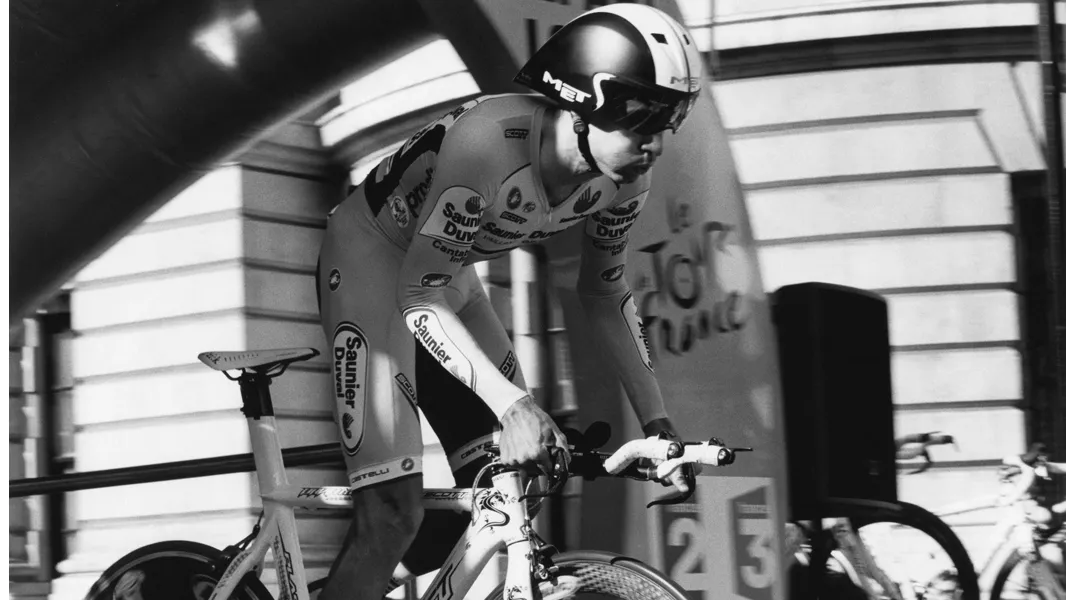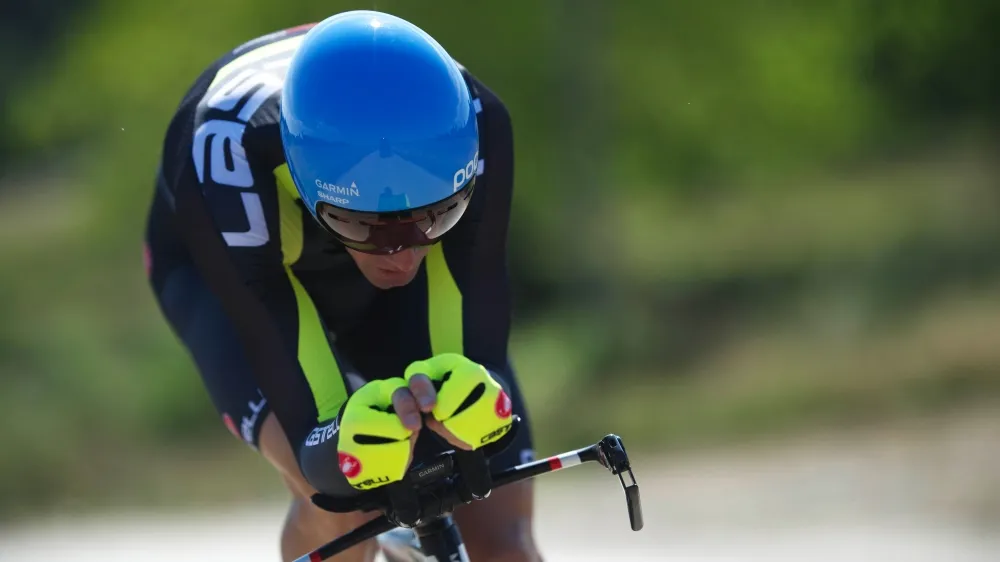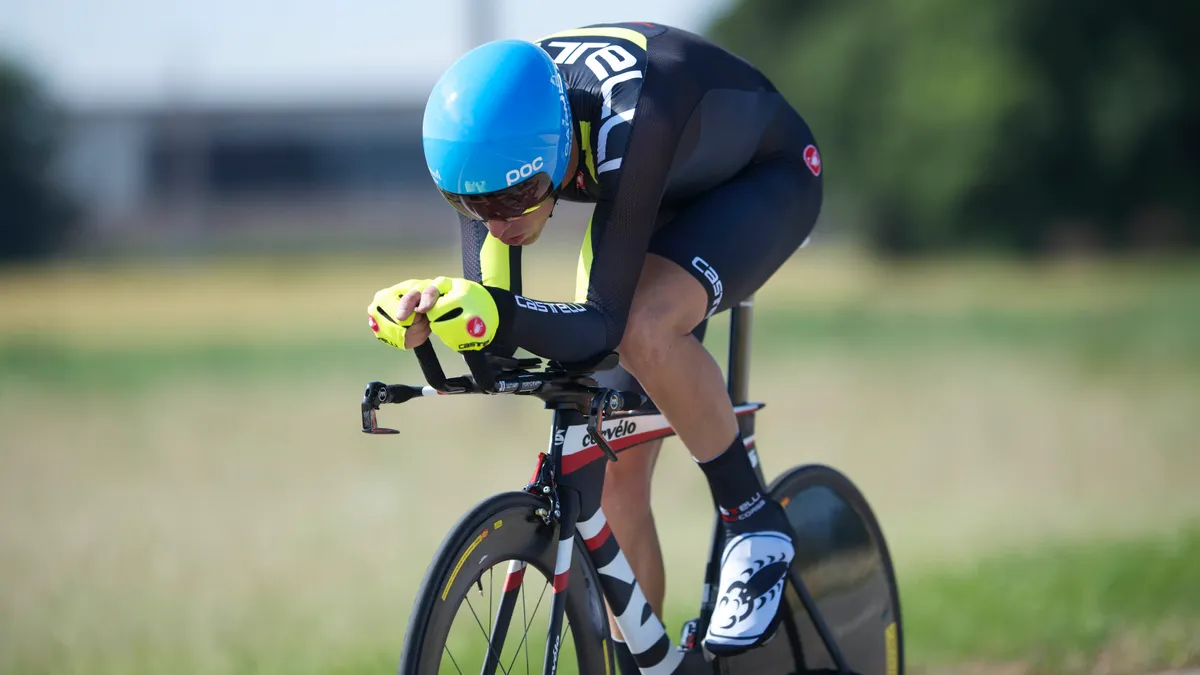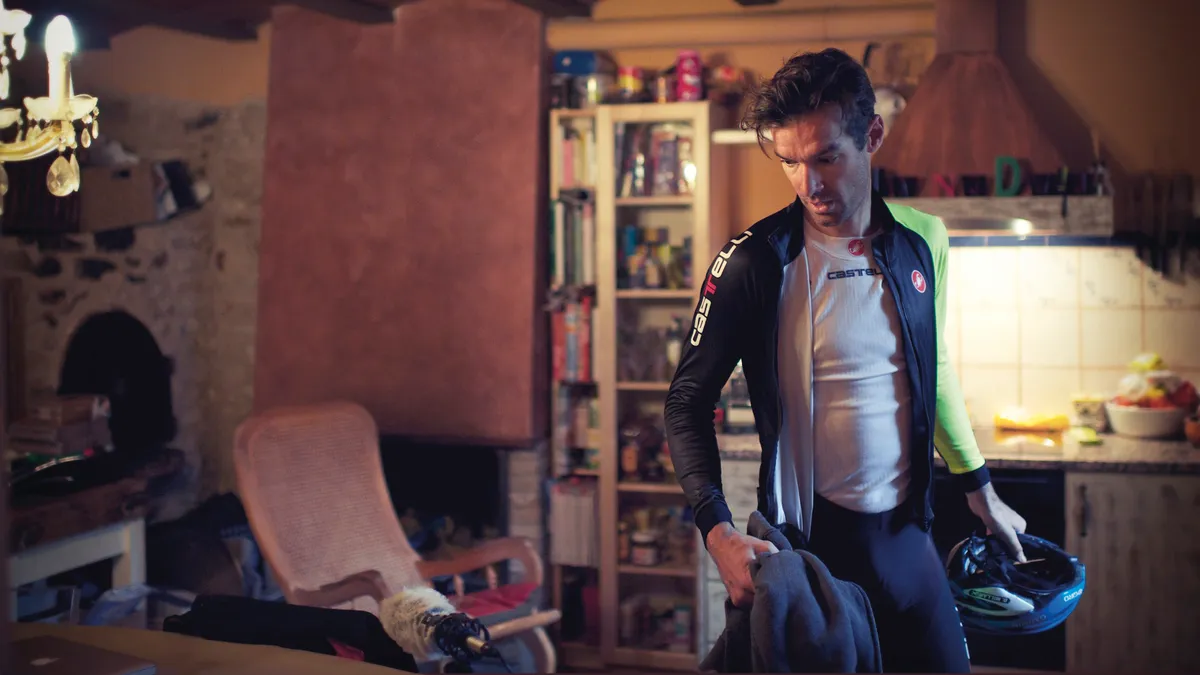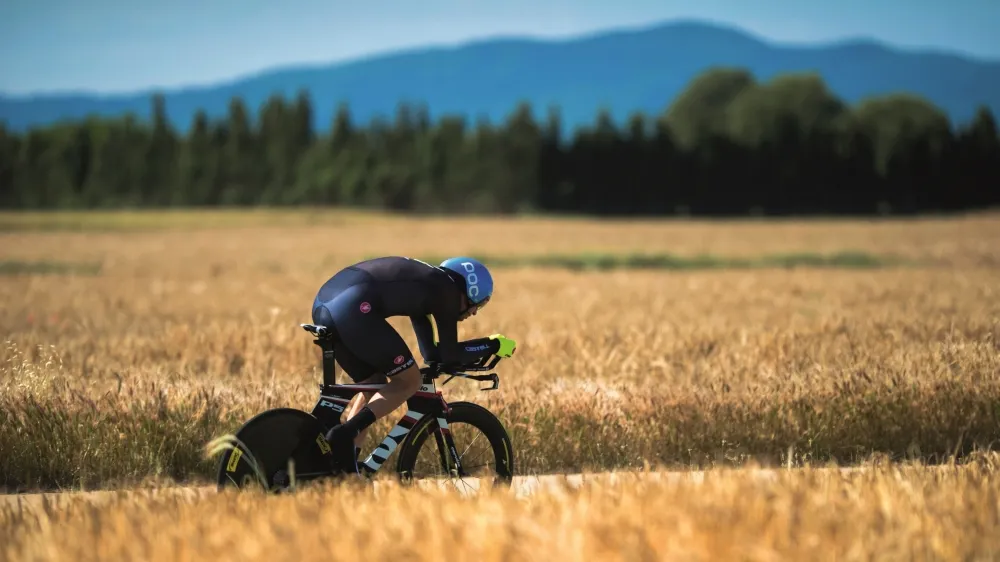This is a promoted post in association with David Millar and A1 Members.
David Millar has always thought outside the box. The training and performance approaches he developed brought him to the very top of the professional ranks. Here, in his ‘David Millar TT System’, he reveals these and, through collaboration with A1 Coaching, outlines how they can be implemented by the everyday cyclist.
The critical training sessions are those you must include in your TT preparation with the limited amount of time you have available. These can be some of the hardest individual sessions you are likely to do but, as well as preparing for the TT, they will serve you equally well in every other aspect of your cycling.
Your overall training programme will take account of the various physiological systems in your body which need to be developed: aerobic endurance, muscular endurance and efficiency, lactate or anaerobic threshold, aerobic capacity (VO2 Max), and so on.
However, as I have outlined in the last article on contextual training, in order for these to be really quality sessions, and for you to maximise your available time, they must also incorporate the other four elements of my system as much as possible.
Therefore, in this post I am giving you examples of three workout sessions which, on the surface, may look much the same as regularly-prescribed workouts but, on closer scrutiny, you’ll notice that they also incorporate those other elements of my TT system.
These sessions are described in ‘training zones’ and many of you will be familiar with these and know how to set them. The zones – or levels of effort – mainly reflect the particular physiological system that is being targeted. There are various descriptions of these zones in use in the training literature and, in these examples, I am using the system used by A1 Coaching. They have a really excellent description of these and you can download this very useful resource for your own use.
Click here to download the ‘Guide to A1 Workout Descriptions’ [PDF, 540kb]
null
As I explained in the last post on contextual training, you need to learn to ride at the correct intensity without being reliant on instruments. Therefore, by all means use your heart rate monitor or power-meter to gauge your effort while training, but teach yourself to be able to feel these. In this regard, ‘rate of perceived exertion’ (RPE) is a much-neglected technique nowadays and, with practice, you will surprise yourself at how good you can become at using this method.
The following three examples of workout sessions are mainly to show you how to begin thinking about integrating the different elements of the system into your training. The way in which various aspects of your physiology are targeted in the workouts is down to a good programme and hard work. However, what will give you the clear edge over rivals with the same size engine, and smaller, is how well you understand the other elements of the system, how you master them, and how you can adapt them to your unique self and the particular target events.
As I said, a training session becomes a quality session when it is planned and executed with clear goals and purpose. So, along with the physiological training, choose other elements of the system which need work and blend them in.
As I have been advocating, you should learn best how to this for yourself, relative to your own context. Don’t try to do too much initially – don’t overload your thinking or processing capabilities so that you end up confused and compromise on quality.
Focus on the element which you can concentrate on until they are well mastered, and then gradually add in more complexity.
Example 1: aerobic endurance and position training
Session name: Aerobic Endurance / Position Training
Warm-up
- 10 mins easy spinning Zone 1 (Z1)
Main session
- 6 mins in TT aero position, Z3
- 4 mins Z1 recovery on tops
- Repeat x 4
Warm-down
- 10 mins Z1
Coach's comments
The main focus of this session is on holding your position while under load, along with an aerobic endurance and lactate threshold training effect.
The sessions are in Z3 which is moderately hard but still allows you to focus clearly on your position. Also, they are not too long or fatiguing at 6 minutes.
- Really tuck into the position during the sets as I outlined in Element 2.
- Focus on keeping the hips rock solid, your head and neck in the ‘turtle’ position and your upper body relaxed but solid.
- Control your breathing and be aware of it: long controlled breaths, deep into your diaphragm, instead of short sharp, gasping ones.
Example 2: lactate threshold, and speed control
Session name: Aerobic Endurance / Position Training
Warm-up
- 10 mins easy spinning Z1/2
- 5 mins gradually increasing to Z4
- 2 mins Z1
Main session
- 3 mins uphill/headwind segment, upper-Z4, - 5 average rpm
- 3 mins downhill/tailwind segment, lower-Z4, + 5 average rpm
- 3 mins uphill/headwind segment, upper-Z4, - 5 average rpm
- 3 mins downhill/tailwind segment, lower-Z4, + 5 average rpm
- Recover 10 mins Z1/2
- Repeat x 1
Warm-down
- 10 mins Z1
Coach's comments
The purpose of this session is to develop your lactate threshold system and to practice speed and cadence control as appropriate to the course segment (see Element 4).
This session is done on a route you will have segmented as described in Element 4. It will have slightly uphill and downhill sections, and you will add in the wind factor depending on direction and strength. You will adjust the session description to suit the precise nature of your particular segmented course.
Note other variables as outlined in Element 4, such as road surface and shelter.
Example 3: lactate threshold, Vo2Max, speed endurance and position
Session name: Lactate Threshold / Vo2Max / Speed Endurance / Position
Warm-up
- 10 mins easy spinning Z1/2
- 5 mins gradually increasing to Z4
- 2 mins Z1
Main session
- 20 mins target TT pace, Z4
- 4 mins Z5
- 10 mins recover Z1
- Repeat x 1
Warm-down
- 15-20 mins Z1
Coach's comments
This replicates actual race day effort.
Focus on holding your position and staying relaxed – see Element 1.
The 4 min Z5 is to condition you to do ‘negative splits’ – to do the second half of your course faster or, at least, to pace your finish so that your tank is completely empty at the end.
Actual Z5 may be hard to achieve at the end of 20 mins at Z4, but try!
After the first 20 min session ask yourself if you could hold the pace for another 20 mins. If ‘yes’, then your pace was probably not hard enough for a 10-miler but probably on the money for a 25.
This is a horrible session, but conditioning yourself to do it in training will make race day easier.
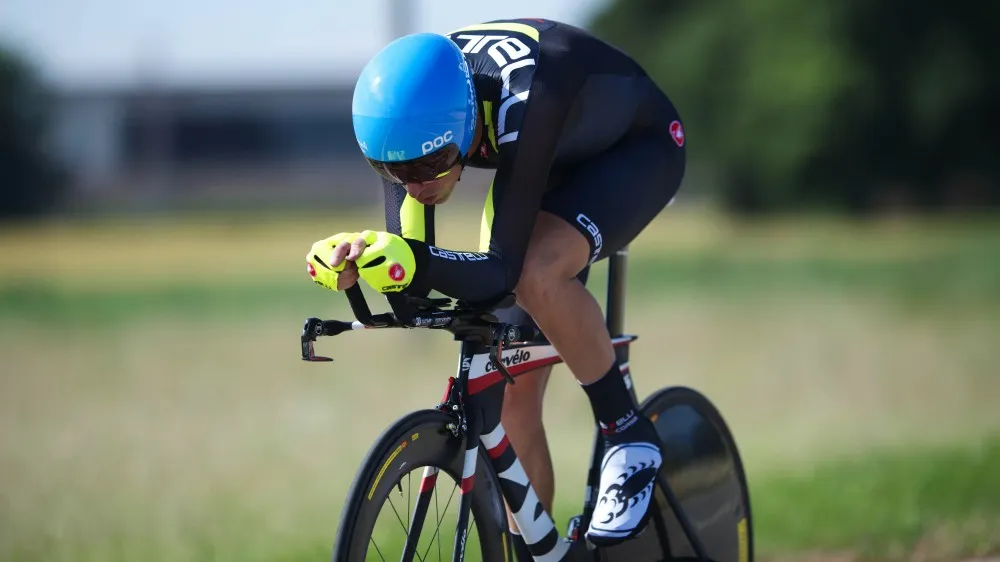
Looking back
Looking back at my young self – at the 15-year-old David Millar starting out at the High Wycombe Club’s evening TT league – what advice would I have given him from the perspective of where I am now?
I’d probably throw all the stuff I’ve written about here at him, and more!
Would he have listened?
Yes, he probably would have soaked it all up – I’m sure most young riders would be glad of the chance to be mentored by an ex-professional with a couple of national champions’ medals, 10 Grand Tour victories, a Commonwealth gold, and such like.
Would it have made the young David a better rider?
I’m not so sure about that. Yes, it certainly would have given him a head start and he would have progressed much more quickly in his early years especially, not wasting all that time in finding things out for himself.
But, was that actually a waste in the long run? And, might the advice of an ‘expert’, telling him the ‘right’ thing to do, have stunted his curious and exploratory streak? As I have outlined, that outside-the-box and challenging nature led to many of my victories and, ultimately, to getting this system written down for the first time.
The point I am making is that the David Millar TT System is not a generic, abstract prescription on how you should improve your time trialling. Rather, it is meant as a roadmap for you to discover and implement what works best for you, in your particular context. That is one of the great joys of cycling – a journey of exploration and discovery in very many respects.
I’m grateful now to the guys at A1 Coaching for prompting me to describe the system that I have evolved and for collaborating with me in getting it out.
I have been lucky enough to have been immersed in the world of professional cycling for over 20 years, where I was surrounding by some of the best minds in the sport. I eventually had access to cutting-edge science and a truly exceptional group of peers, who acted as a sounding board as I developed and refined my craft. I found out a lot of things in that milieu.
However, much information about new advances in the sport are now firmly locked away, for reasons of ‘commercial sensitivity’, or in case sharing the knowledge would diminish the career accomplishments of some. With all those young Davids in mind, and the not-so-young ones too, it gives me great satisfaction that there are no secrets lying in my locker.
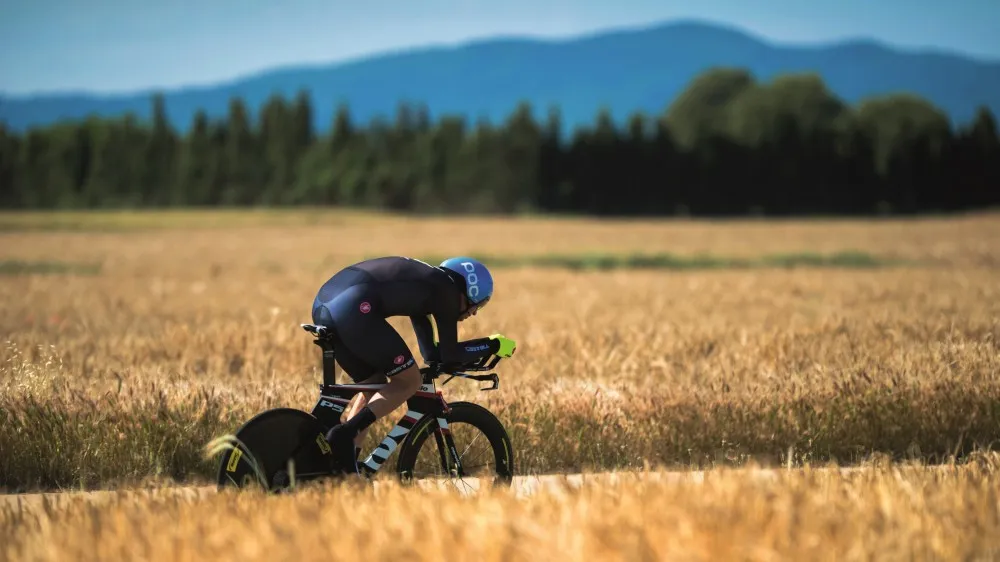
Looking forward
Now that I have finished my ‘5-point TT plan’, I realise that it should probably have a sixth point – Action!
Study the system and, as intended, contextualise it to your circumstances. Keep an open mind on it too – you may be able to improve on it through your own thinking and inventiveness.
If you think you need more support, do get in touch with the guys at A1 Coaching.
Given the chance now, the advice in this series of articles is the best I would have given to the young David. I can’t do any better than that.
With ten Grand Tour victories, British and Commonwealth championships, and a host of other achievements on his palmarès, David Millar has a great deal of knowledge on how to become a great bike racer. Now retired from the professional game, David has taken time out to describe the time trial system he developed over the course of his career and shares it in his ‘David Millar TT System’. Produced in conjunction with A1 Coaching, there is something in this for all riders, along with added insight in the associated free 4-Part Video Training Series.
